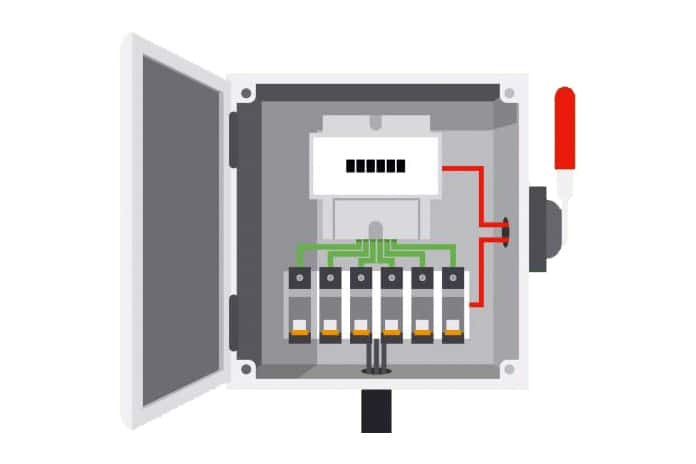A circuit breaker, an automatic switch, is a device capable of interrupting, or opening, an electrical circuit when an insulation error occurs in an electrical installation. It serves to protect both the electrical devices themselves and people.
In other words, Circuit breakers are a protective measure against damage to a circuit in the event of an electrical current overload. In other words, it makes sure that nothing breaks if you have too many appliances on at the same time and cause a short circuit
Unlike single-use fuses, a circuit breaker (an electrical breaker) can be put back into operation if the causes that triggered it have been resolved.
Main Characteristics Of Electrical Circuit Breakers
Circuit breakers are manufactured in different sizes and with other characteristics. Due to their comprehensive typology, they fit and are used both in private homes and in commercial premises or industrial buildings.
As an electrical component, we must take into account the following characteristics to differentiate them from each other
- Work stress: The voltage for which it has been designed. It can be single-phase or three-phase.
- The nominal intensity: Represents the value of working current.
- It is cutting power: It corresponds to the maximum intensity that the device is capable of interrupting.
- The closing power: It is the maximum current that the circuit breaker can withstand without being damaged.
- The number of poles: They are the number of connectors, in absolute numbers, that we can connect to the electronic device.
Types Of Electrical Circuit Breakers
The main types of circuit breakers, the most frequently used, are thermal, electrical circuit breakers, magnetic ones, magneto-thermal ones, and differentials.
The electrical circuit breakers that are sold the most, the most requested, are those used in domestic installations, inside private homes. They are the circuit breaker and the differential circuit breaker.
Thermal Magnetic Circuit Breaker
The magnet circuit breaker or magnetic circuit switch, is the device responsible for cutting off the passage of an electric current when it exceeds a certain threshold, previously set. Its function is to protect the rest of the electrical installation and the equipment that we may have connected to it, from possible overloads and short circuits.
A particular circuit breaker is the motor protection circuit breaker, a widespread switch in industrial processes. Its operation is the same as the rest of the circuit breakers. Still, it is expressly designed to withstand the current peaks that are generated during the start-up of industrial electric motors.
Differential Circuit Breaker
The differential circuit breaker, or differential switch, has the function of protecting people from possible electric shocks. It works together with the earth connections of the elements that are part of the electrical installation.
- The differential circuit breaker compares the intensity of electric current entering the electrical circuit with the power leaving the course. If both currents are equal, everything is correct, and the differential switch remains closed to allow the passage of electricity. If both winds are different, due to some interference or discharge, the output intensity would be lower, and the differential switch would open, activate, cutting off the passage of electric current.
Where Are The Circuit Breakers Installed?
The different types of circuit breakers are installed in the electrical panel. The most common electrical configuration is to establish an available switch, immediately after the differential switch and, from the differential circuit breaker. These magnet circuit breakers correspond to each of the electrical circuits of the electrical installation. At present, it is usually replaced by digital meters.



